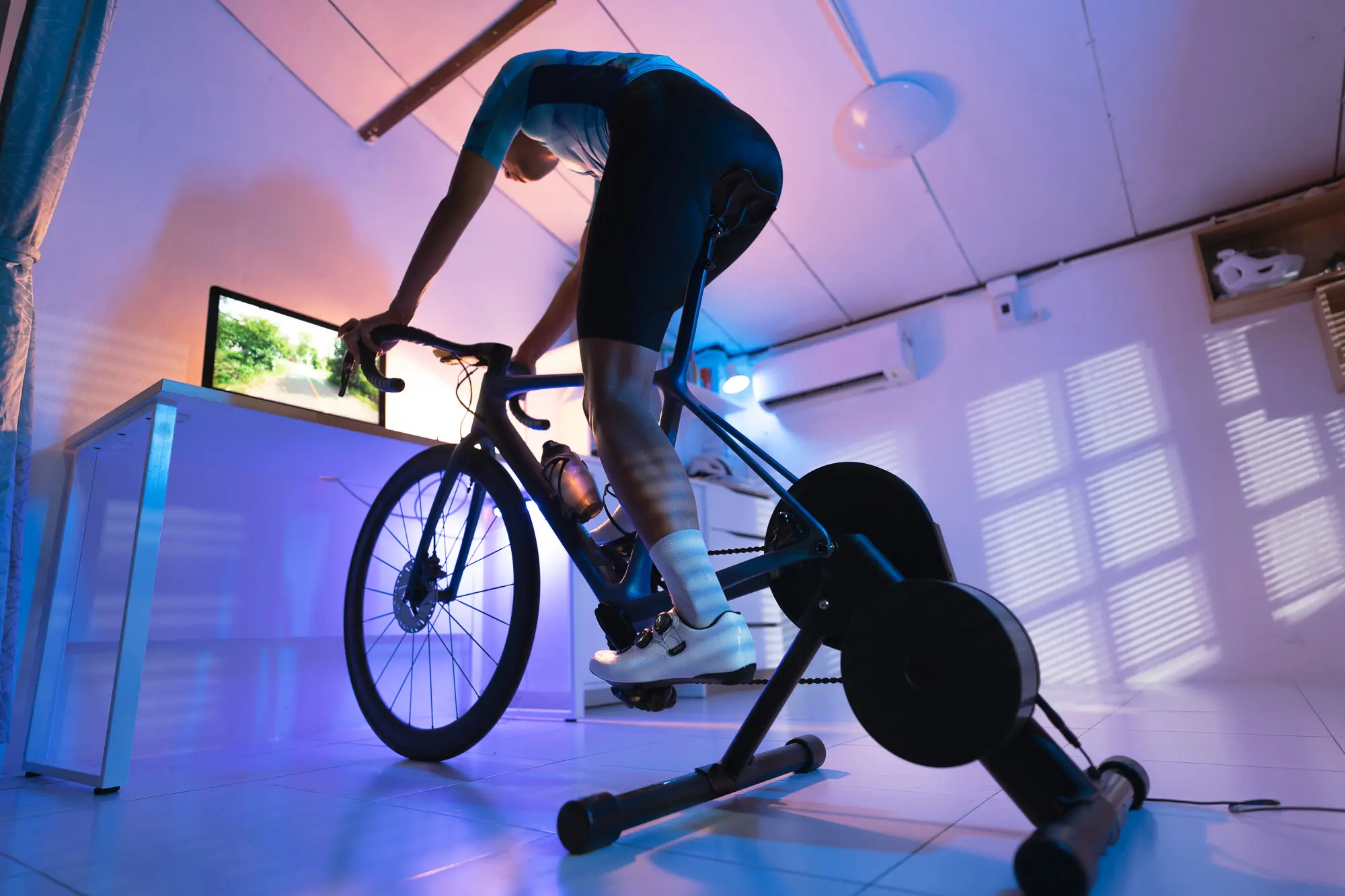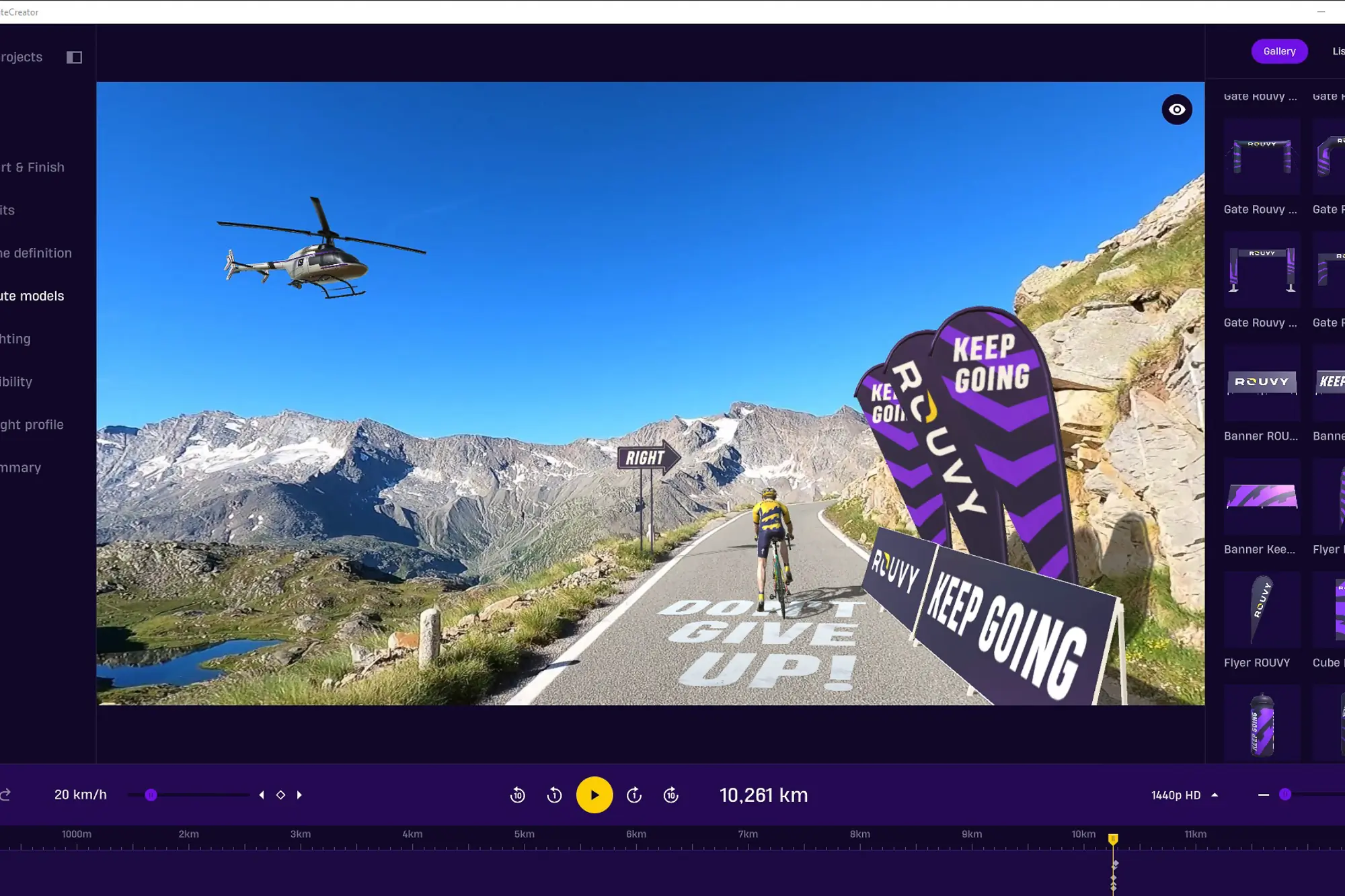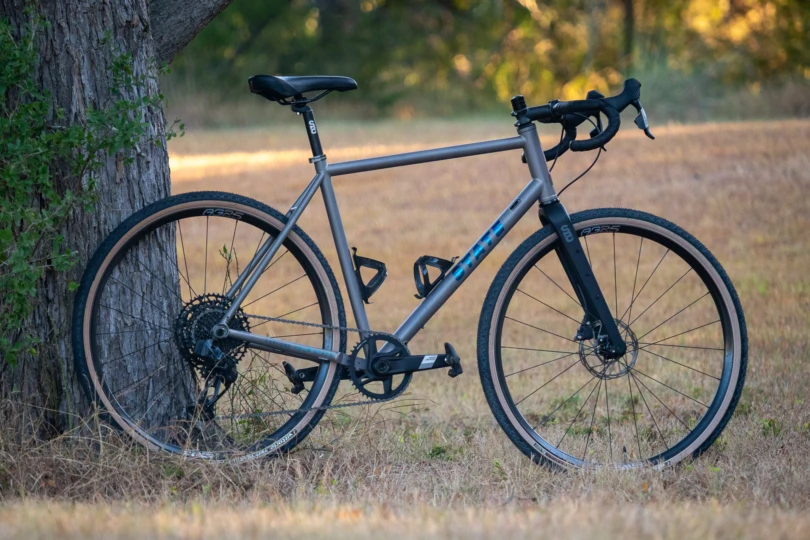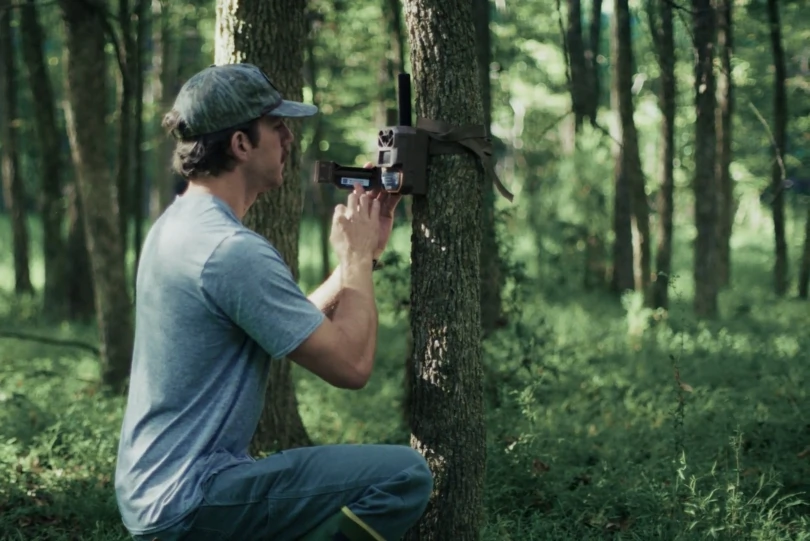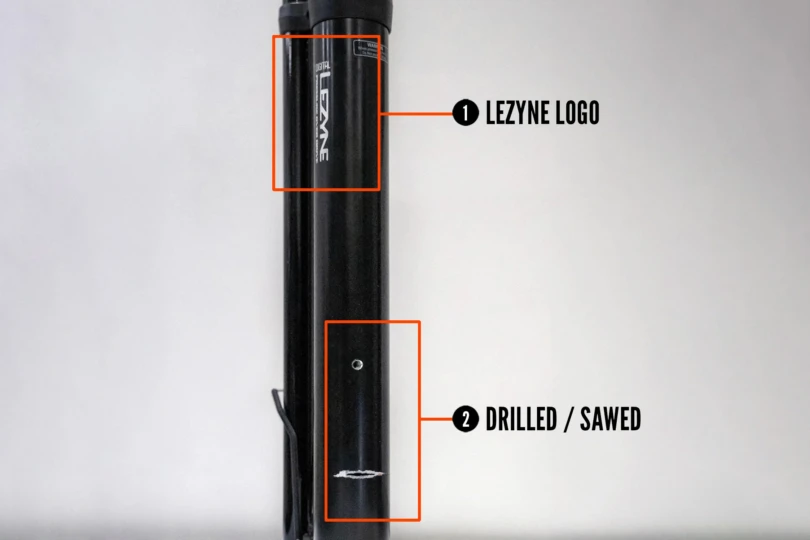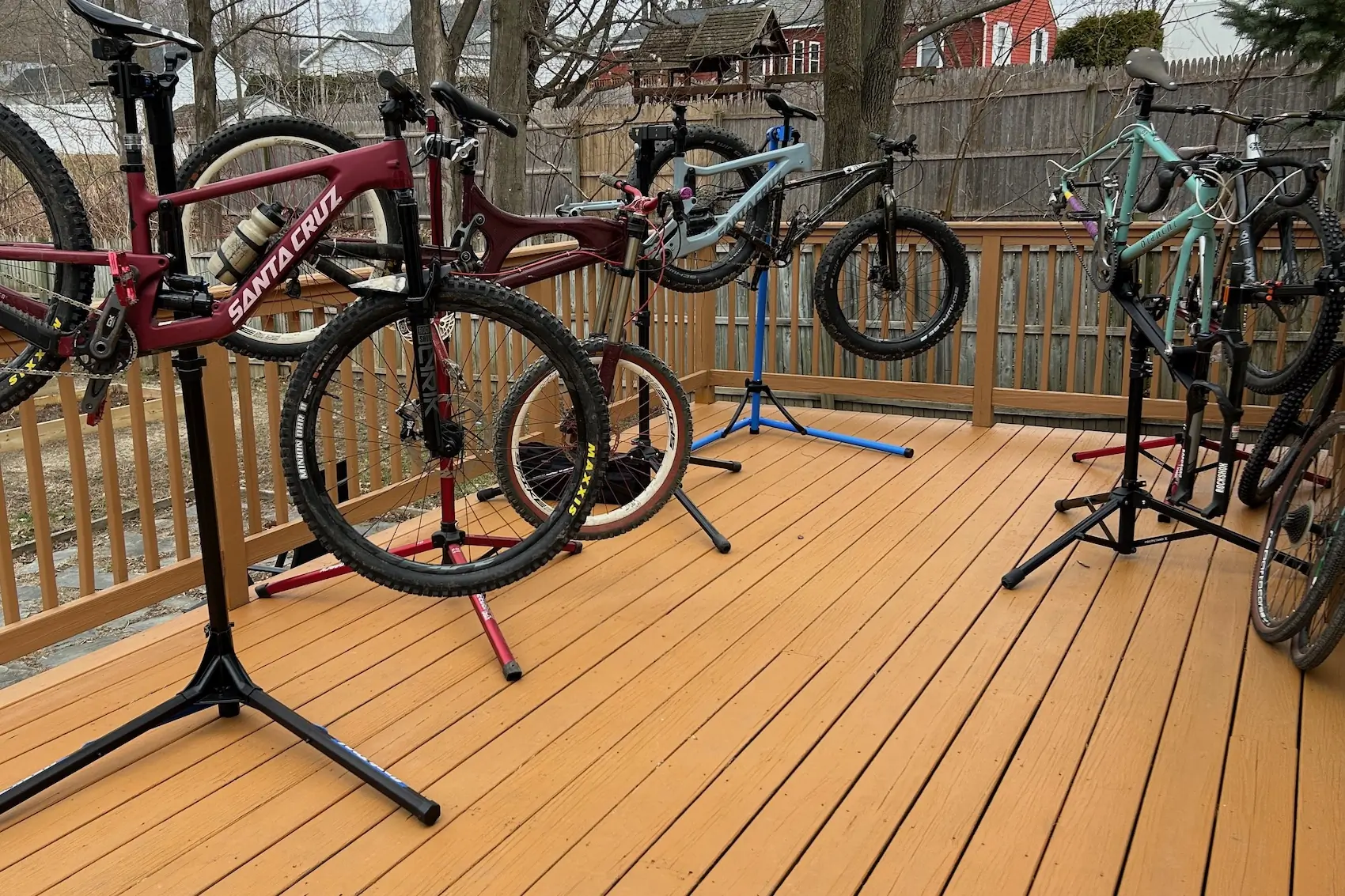Indoor bike training seems like a sufferfest: a sweat-drenched cyclist alone in a dark basement, sucking stale air, pedaling hard but going nowhere. There are no fellow riders to talk to, no draft to ease the burden, and no scenery to pass the miles. Maybe there is even an analog clock, loudly ticking every second.
But it doesn’t have to be that bad, and you can emerge in the spring ready to pounce on KOMs while your buddies fade behind you in the distance.
Read on, soldier of fitness. Let my 40 years of cycling training and indoor suffering be of service.
Build your perfect pain cave: Check out our guide to the Ultimate Indoor Bike Training Setup.
Are you shopping for an indoor bike trainer? Check out our comprehensive guide to the best bike trainers.
Trainers: Required Gear for Indoor Bike Training
Other than the bike, you will need an indoor cycling device — and you have choices here.
These indoor trainers have changed immensely over the last 4 decades — from old-school rollers with nothing but tire rolling resistance to the modern, wattage-based connected trainers that allow riding in virtual worlds.
Each option has its own benefits — from portability, footprint, and information and feedback — and potential drawbacks.
I had the first indoor trainer, the Racer-Mate Wind Trainer, which came out in 1976. As the name suggests, it used air resistance provided by a turbine driven by the rear tire. It was stupidly loud and didn’t feel like riding on the roads, but it was all we had, and it did keep me fit.
Indoor trainers have come so far, but you don’t need the latest and greatest to ride indoors to stay fit.
‘Analog’ Trainers
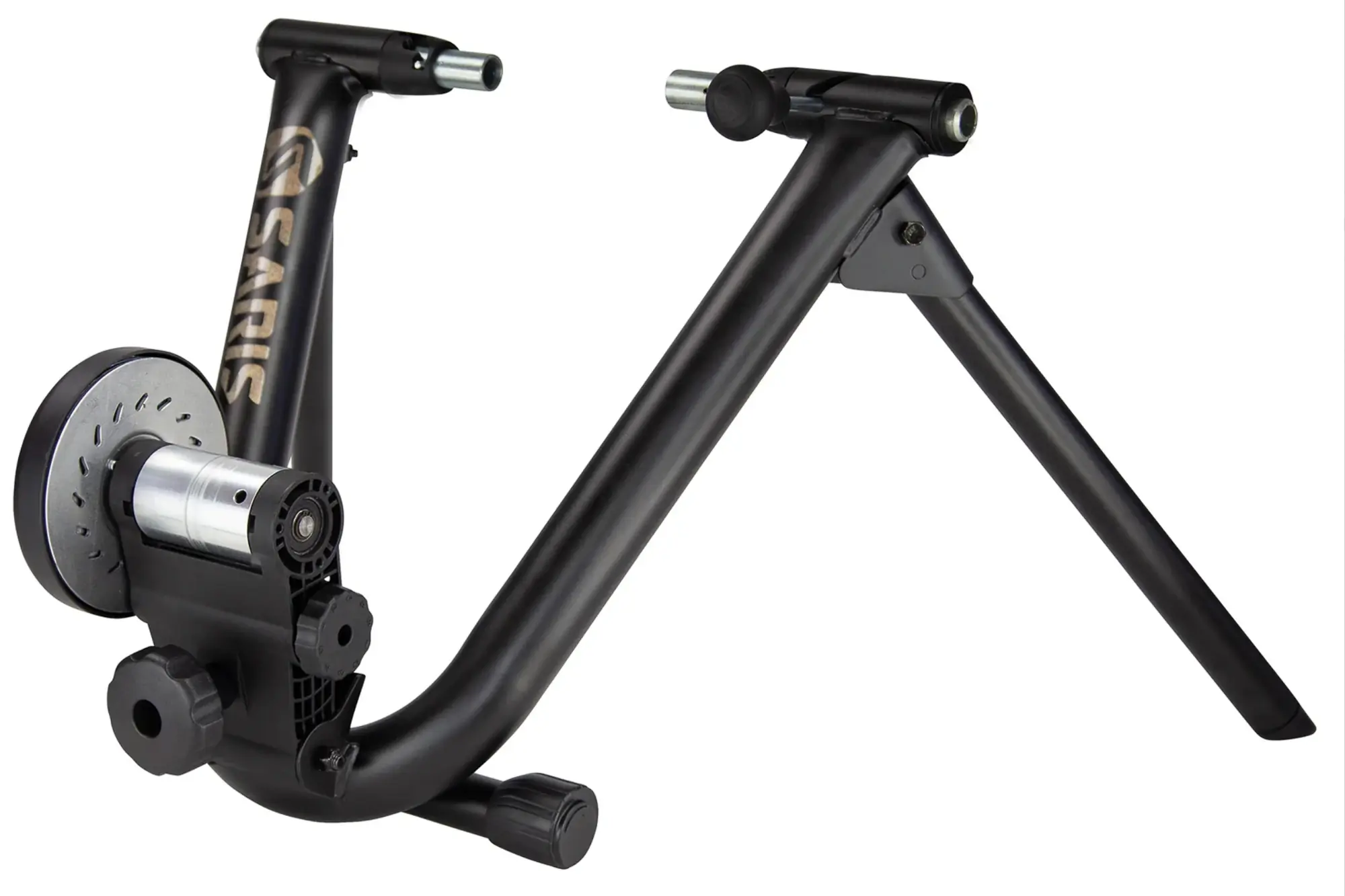
At the very least, you need something to provide resistance to mimic the air and rolling resistance of cycling outdoors and the added load of pressing up hills. Tire-drive trainers are the most affordable and simplest way to do this.
Tire-drive trainers are so named because the bike remains intact, and the rear tire engages with the trainer. Some use a turbine spinning in hydraulic fluid to generate resistance, and others use magnetic resistance. They both use a flywheel weight to at least partially replicate the momentum of a rolling bicycle.
Fluid trainer resistance increases exponentially with tire rotation speed (like air resistance), while magnetic trainers usually have manually adjustable resistance levels.
Tire-drive trainers are relatively light, have a small footprint, and usually fold for easier storage. This makes them more compatible than other indoor trainers for small spaces.
There are plenty of models under $100 on Amazon, and proven established models at $130 make them the most affordable indoor cycling training option.
One distinct disadvantage of wheel-on indoor trainers is that they quickly wear the rear tire. If you have a spare rear wheel, you can mount a specific trainer tire that resists wear.
Smart Trainers
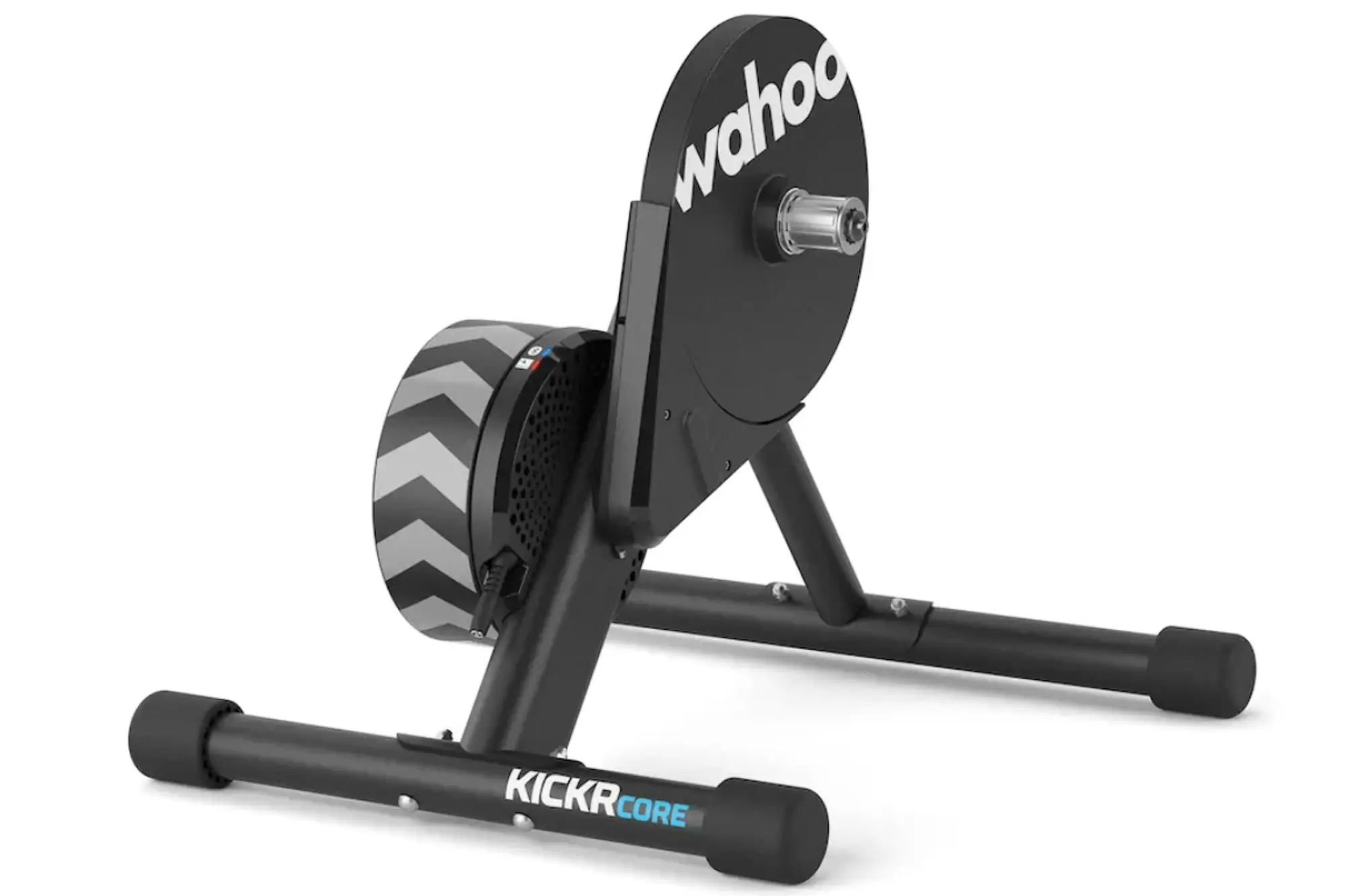
These are the best indoor cycling trainers and have higher price tags to match. However, they provide many benefits over “analog” versions.
Smart trainers use very accurate electromagnetic resistance to produce and measure load. In essence, they have a built-in power meter to measure output and the ability to provide a set resistance regardless of wheel speed or pedaling cadence.
These trainers also have some sort of flywheel to mimic momentum. Finally, smart trainers connect wirelessly to phone apps and computers, opening up a vast array of options for training and gamification. More on that later.
Most smart trainers are direct drive or “wheel-off.” This means the rear wheel is removed, and the bike directly mounts through the rear axle. The cassette has to be swapped over, or a second cassette stays on the trainer.
However, these trainers do not accelerate rear tire wear or touch or put pressure on any part of the bike frame. Proven and popular direct-drive smart trainers, like the Wahoo KICKR Core, are around $500 and go on sale often. I see the KICKR Core a few times a year at $400.


Direct-drive smart trainers can also be heavier than most “analog” models; many do not fold for storage and can have larger footprints. A handful of tire-drive smart trainers are available for those with tighter budgets or living conditions.
These start at around $350, and like the direct-drive versions, they go on sale often. I see them discounted to roughly $250. But, again, they can quickly eat rear tires and don’t feel nearly as smooth; they can also be loud and are usually of lower quality and less accurate.
Rollers
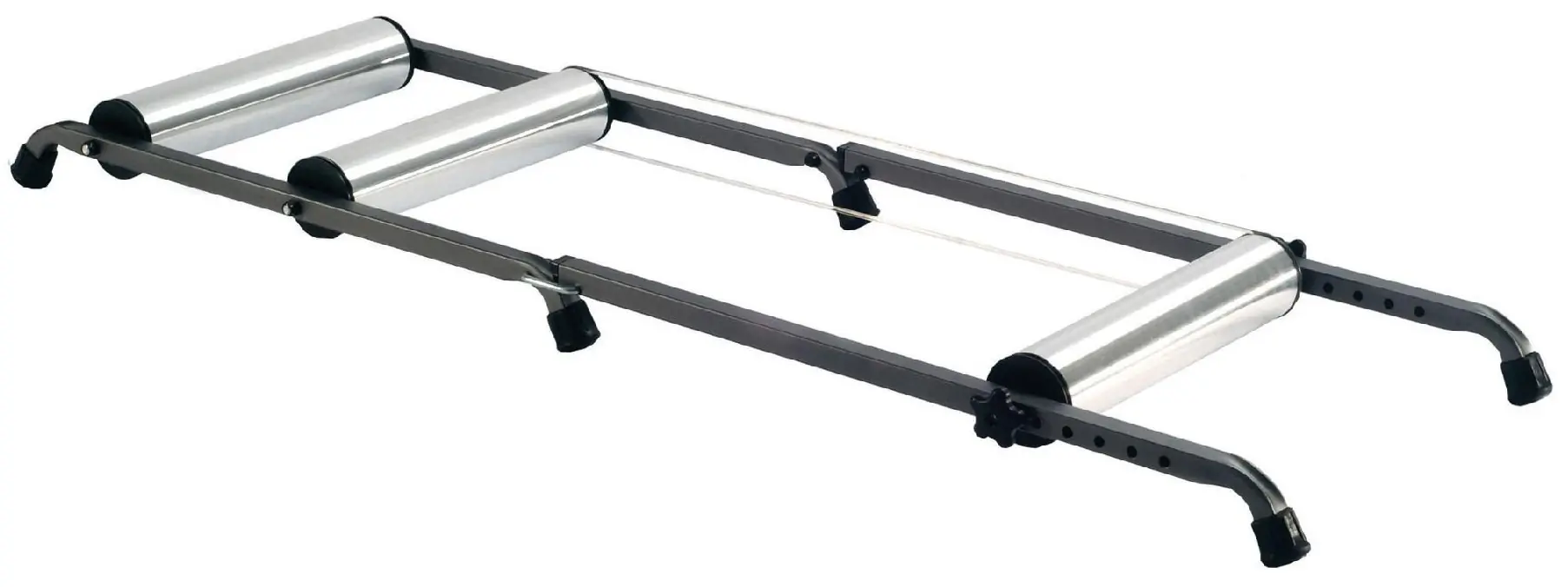



Rollers are decidedly old-school; they’re all we had before the first wind trainer. And they’re still in use because they stress good pedaling dynamics due to the balancing aspect. Traditional rollers also encourage high cadences, as they don’t apply resistance other than what comes from the tires.
Rollers are the only indoor bike training device that requires a high level of skill. You must stay balanced and ride within the width of the roller drums (this is not as easy as it may sound). Without forward momentum, riding rollers requires more attention, and the bike’s reactions to inputs are exaggerated.
The lack of resistance on traditional rollers limits them to low-intensity aerobic training. But newer versions have resistance units driven by one of the drums, or they have smaller diameter drums to increase rolling resistance. You can also air down your tires slightly to increase resistance.
I rode traditional rollers a lot in my youth and college; the newer resistance rollers require a lot of skill and focus!
Another advantage of rollers other than stressing good pedaling form is that, at least for me, time goes by so much faster, and I don’t at all need visual distractions. Listening to music or a podcast combined with the intense focus to stay upright is enough.
Stationary Bicycles




We are all familiar with the stationary bikes found in commercial gyms or the spin bikes used in classes. I won’t cover these since, often, they don’t mimic the fit or kinematics of a real bicycle.
The stationary bikes most interesting to cyclists are those that endemic cycling brands offer. Although these “bikes” cannot do the double duty of riding both indoors and outdoors, they are a new option.
One such offering is the Zwift Ride Smart Frame ($800), which mates with many indoor trainers. The brand also offers it as a package with the Wahoo KICKR Core ($1,300). These are both more affordable than a modern, high-end road bike. But again, they are single-purpose.
Are you shopping for an indoor bike trainer? Check out our comprehensive guide to the best bike trainers.
Accessories for Indoor Bike Training
In addition to an indoor trainer, a few key accessories can exponentially improve your experience and make it a more productive workout.
A Strong Fan: A Must for Most
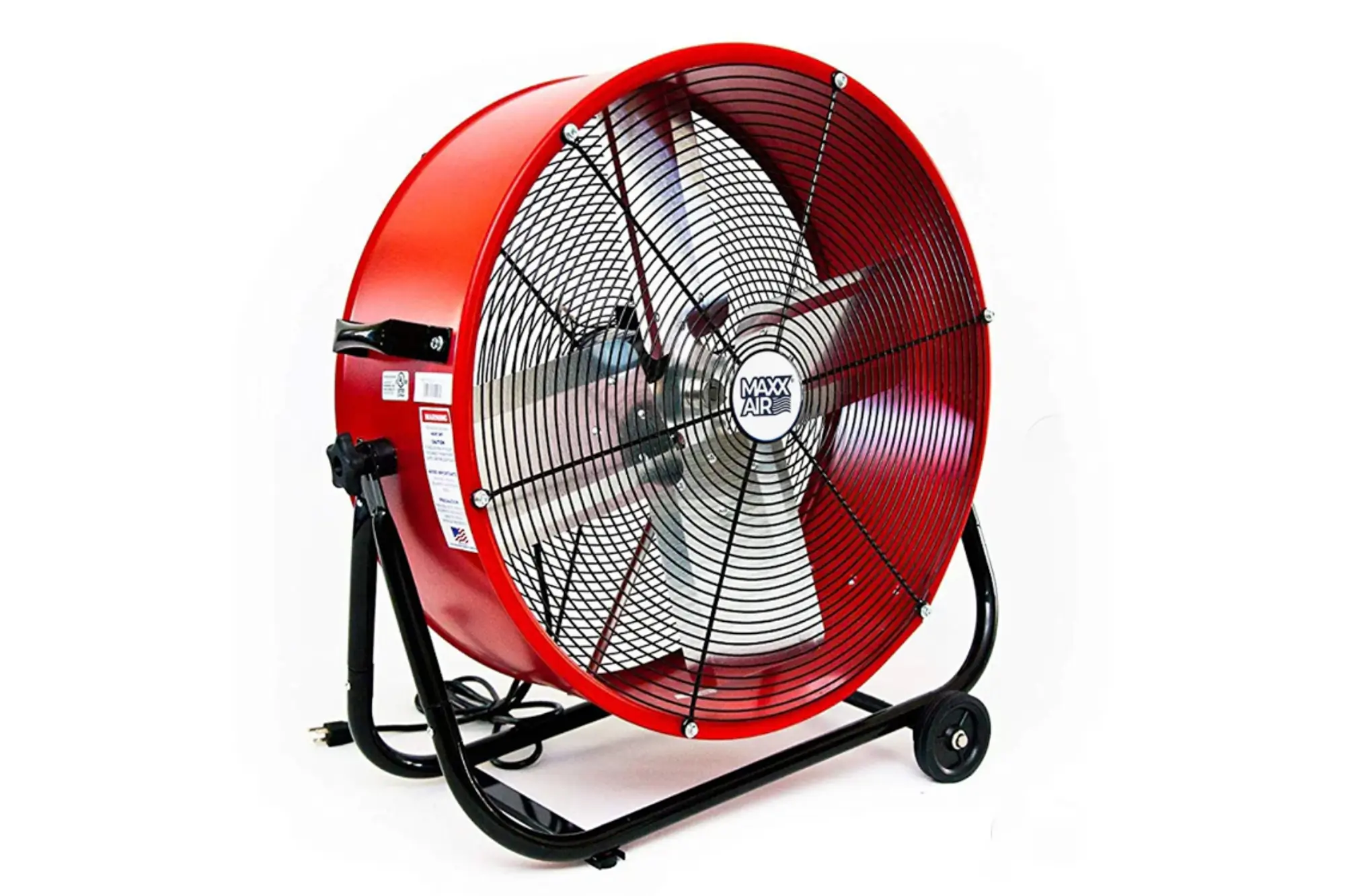



Due to stationary cycling’s lack of air movement, you will quickly become an overheated mess, pedaling in a puddle of sweat. A high-velocity fan is crucial in keeping your exercise intensity intact and preventing your training session from becoming an unbearable chore.
A normal, oscillating desktop fan may work for doomscrolling in the summer. But even in the dead of winter, a powerful fan that directs the airflow straight at your body is required.
There are plenty of suitable options everywhere, but err on the side of having too much power. A small barrel fan, in conjunction with a ceiling fan, was my standard for decades. Cycling partners without ceiling fans almost universally use 10-24-inch drum fans.
I guarantee that if you shortchange this, you will regret it at some point. This also means considerable noise, but such are the sacrifices for a productive training session.
Something for the Sweat
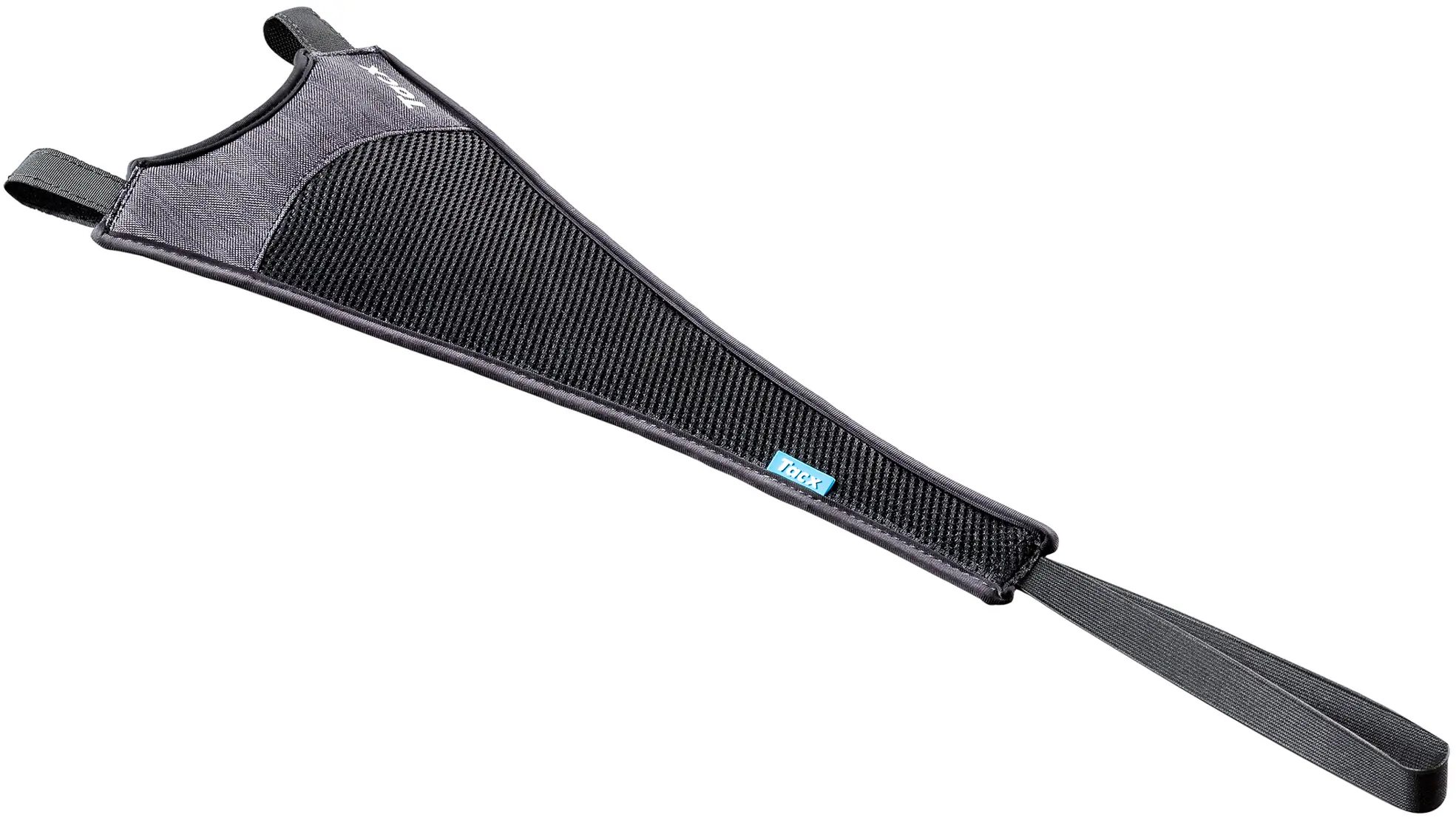



Even with a tornado-like fan, sweat will drip off your body. And somehow, if you don’t mitigate it, it can sneak into your headset, shift-brake levers, and potentially the bottom bracket. I have had to replace a few top-side headset bearings in the carefree days of my youth.
Certainly, a towel works fine. But of course, the cycling industry offers sweat guards that attach to the handlebars and seatpost. I’ve never felt the need to use one. And you will need a towel anyway if you want to periodically clear the sweat off your face (or anywhere else) because it will accumulate.
If you ride on the carpet, a trainer mat is recommended. It’s much easier to clean the sweat off a water-resistant mat than your carpet. Your cohabitating partner will thank you, too.
Also, remember to wipe the bike down when you are done to maintain the finish and prevent sweat from migrating to places like water bottle cage bosses. I have experienced the sickening sound of shearing the boss within a carbon frame because the bolt was frozen from sweat corrosion.
Front Wheel Riser
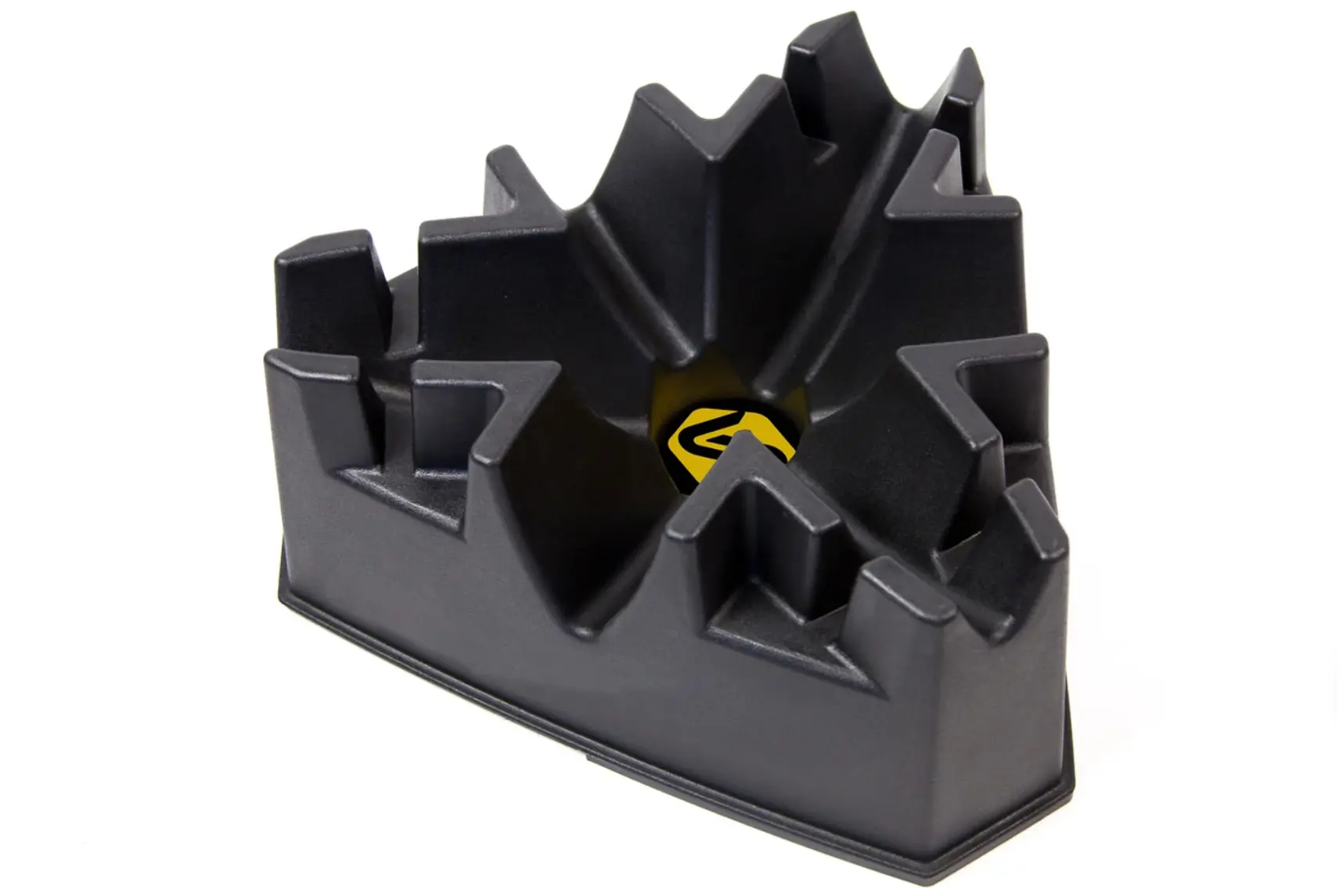



All trainers raise the back of the bike at least a few inches. Keeping the bike level requires raising the front. Books, sections of 2 x 4, and stacks of money will all work.
You just have to match the level where your back tire would be if it was still on the bike. But the wheel is unstable, and movement can eventually move whatever is used to level the bike. This requires getting off the bike mid-session or suffering in a constant downhill orientation.
Some trainers come with a front riser with a wheel well that matches the trainer. The wheel well stabilizes the front wheel so it doesn’t flop around, and the matched block ensures a level bike.
Several bike accessory brands sell front wheel blocks with wheel wells of different heights. This is the best long-term solution, as it can match any trainer you may have in the future.
Handlebar-Level Table
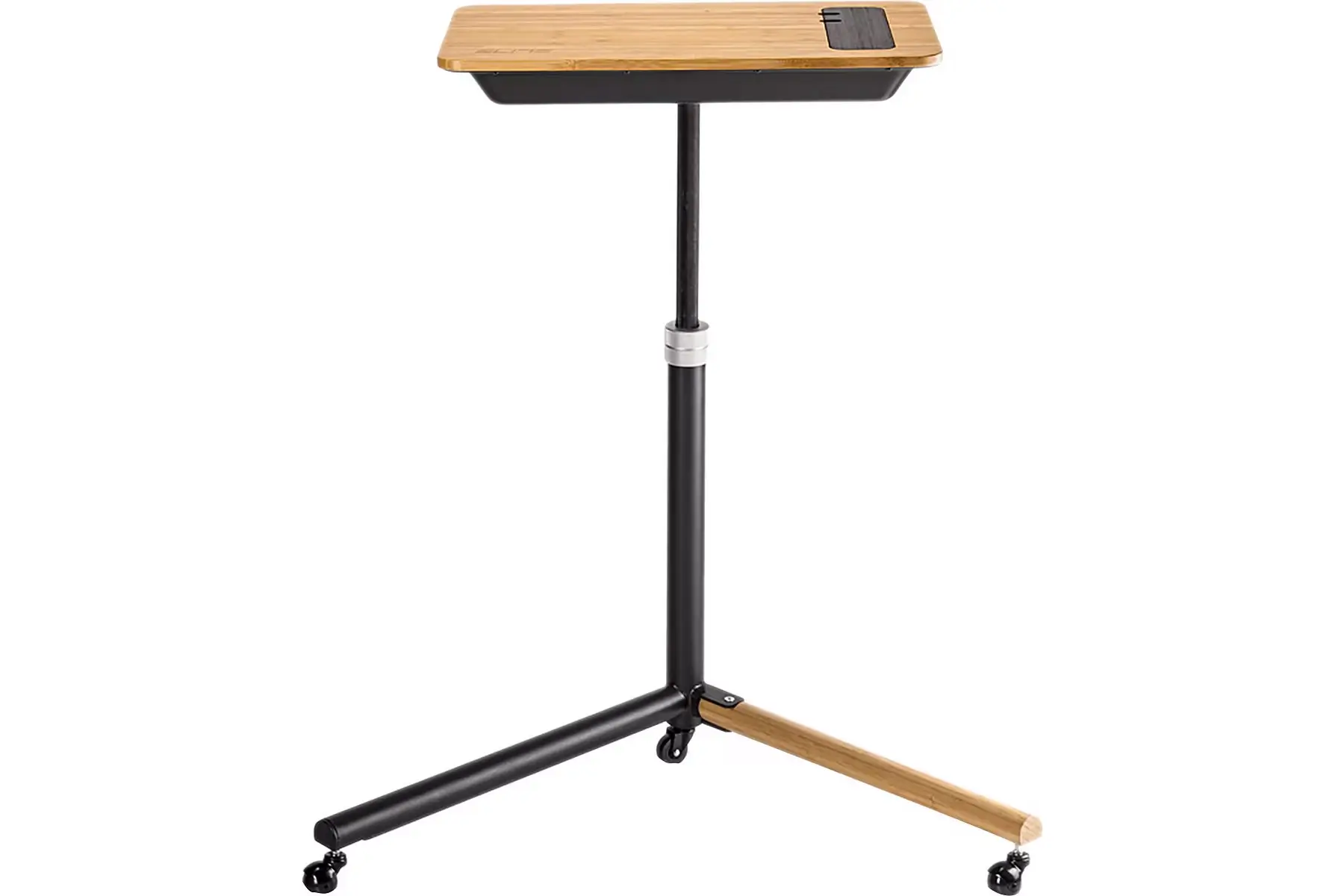



If you use a smart trainer, you will need a table that can support your laptop computer at a level you can read and access. And even if you have an “analog” trainer, you may want to distract yourself by watching a movie or video on your phone or computer.
I have devised several DIY ways using things I had in the house to support my computer while in the pain cave. The issue is the height. The handlebars are already higher than most tables, and the trainer adds a few inches.
And as much as I’d like to point out ways to dodge rampant consumerism, I must recommend a specific bike trainer table. I did without one for decades, and as soon as I got one, I knew I should have done it so much sooner.
Specific cycling training tables like the one in the image above are convenient, and, most importantly, they work without fuss. They can adjust to the correct height, putting the computer at the exact right level for viewing and accessing keys.
They have leg designs that work around the bike and other cycling training accessories (described later). And the table surface is usually large enough to hold snacks, drinks, a towel, etc. This allows you to avoid storing food in jersey pockets to stay cooler. It also allows the use of larger water containers to combat the effect of greater core temperatures, which is usual for me while training indoors.
Trainer tables are stable, which is not a small thing when your laptop computer sits atop them. Some of my DIY contraptions using boards were not that stable, and they collapsed when my bars moved under my hard efforts, toppling my efforts to save money.
Finally, most roll on wheels, making removing the bike to ride outdoors easier.
Training Apps Make It Fun and Productive
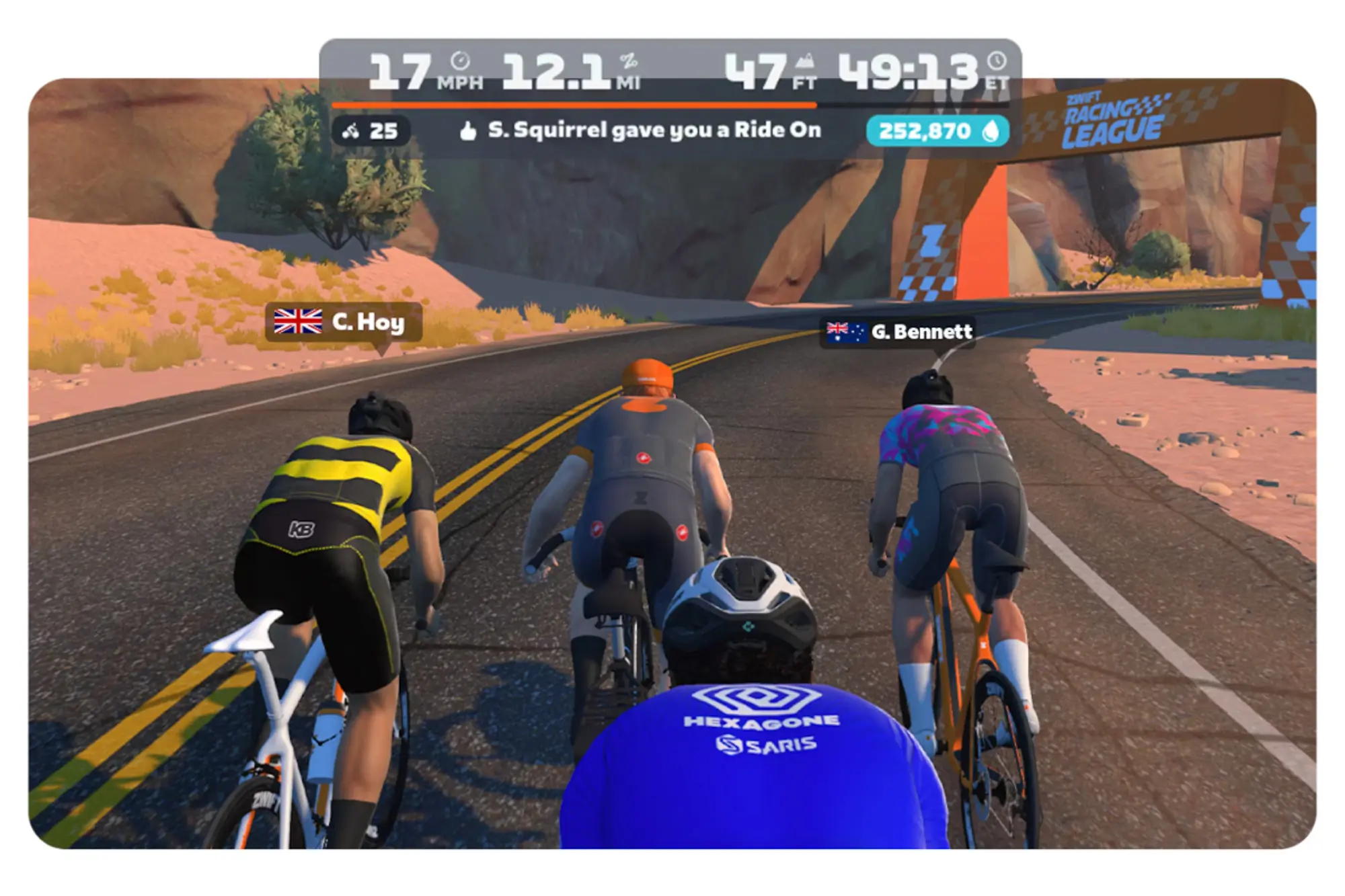



Entertainment
Most cyclists need some form of distraction to combat the monotony of indoor stationary cycling. Without views, others to chat with, or a feeling of movement, boredom can often be the crux of completing the planned session.
Most serious cyclists use interactive, web-based cycling programs, such as Zwift and Rouvy, to bolster mental engagement and potentially add the social element of riding in groups. These programs have virtual worlds to provide a facsimile to views, and you can ride in a group of real participants (or bots) to help you maintain the prescribed intensity. Rouvy even uses real-world footage matched to the required effort delivered by the smart trainer.
These platforms also have planned group training rides with different ability levels, average speeds/power outputs, and durations. There are also races where you can compete with others (or friends) who are closely matched to your average speed or power output. Some races even offer prize money. You can also “free” ride, moving at your own pace, with or without others.
You can converse with packmates if they choose the option. I’ve had plenty of trash-talking sessions while attacking or being attacked among friends.
Most of these platforms have ways to “level up” via the number of rides, consecutive rides, or other performance metrics. This allows you to “buy” things for your virtual bike, different apparel, and even sunglasses.
Routes can be “real,” with matching scenery and terrain, and a smart trainer delivers the load that matches the real world. You can ride up famous climbs in the Tour de France or sprint down the Champs Elysees. Other routes are imaginary, such as riding under the ocean or on another planet.
The requirement of a smart trainer and subscription fees to these interactive programs make the barrier to entry high. However, the value of gamification often outweighs boredom and the higher perceived suffering that goes along with it.
Prescribed Workouts
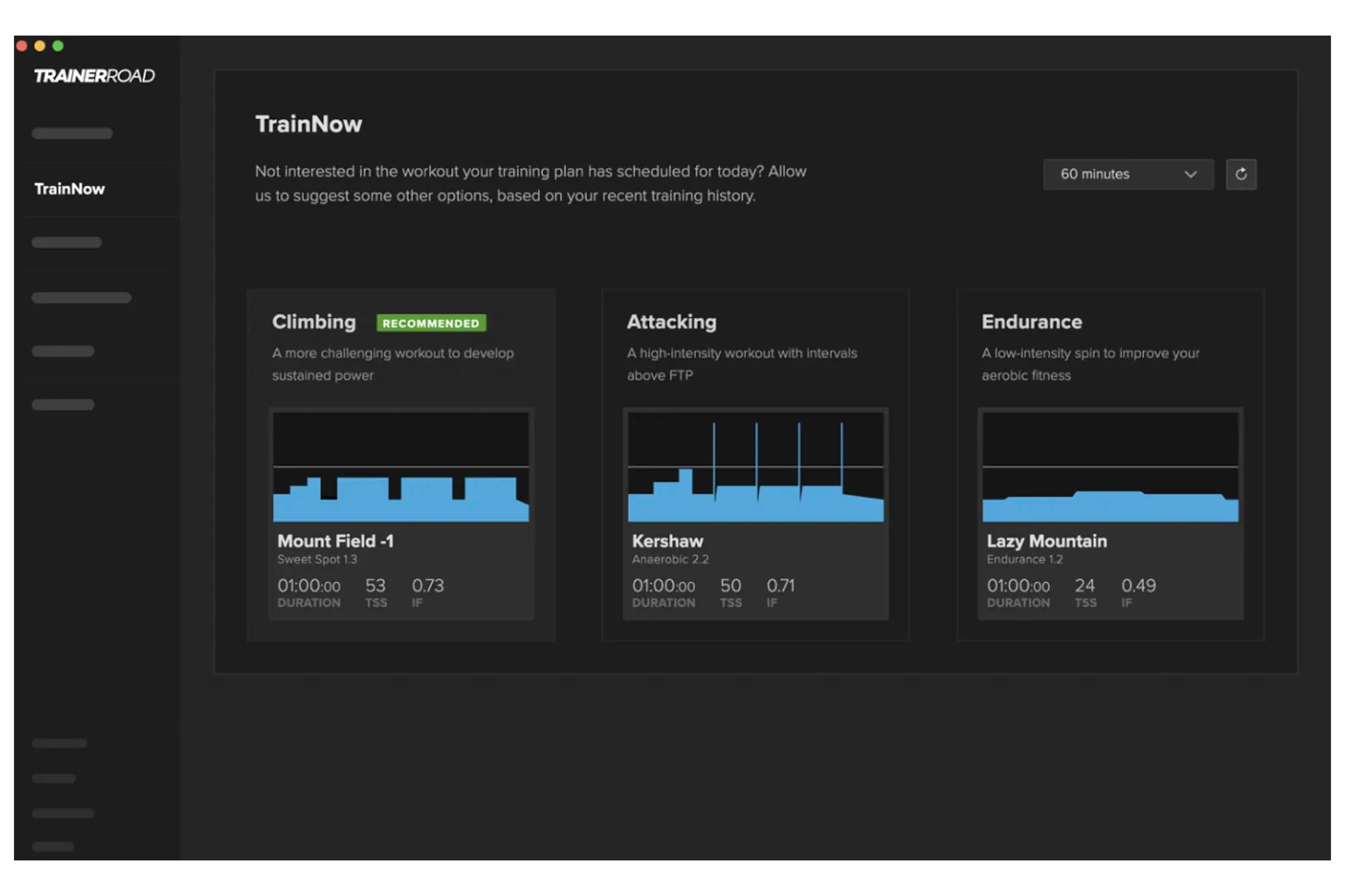



Additionally, most interactive cycling platforms offer prescribed workouts aimed at different fitness aspects, and some offer longer-term training plans. Trainer Road is an online service that strictly offers interval workouts.
Competitive cyclists often do intervals on indoor trainers even when the weather is good due to the ability to finely control each effort. In the virtual world, there are no traffic lights or changes in wind direction that may alter your efforts. Many do the warm-up and intervals via indoor bike training and then remove the bike and head outdoors for the longer aerobic portion of the day’s ride.
Most of these platforms have ways to “level up” via the number of rides, consecutive rides, or other performance metrics. This allows you to “buy” things for your virtual bike, different apparel, and even sunglasses.
The requirement of a smart trainer and subscription fees to these interactive platforms make the barrier to entry high. However, the value of gamification and prescribed training often outweighs boredom and the higher perceived suffering that goes along with it.
Some platforms, like MyWhoosh, are free. I cannot see these platforms remaining free indefinitely, but get it while you can. Scouring Craigslist or Facebook Marketplace always yields used smart trainers at steep discounts, especially during the summer. This can help you get into the virtual worlds for less money.
Tips for Indoor Bike Training
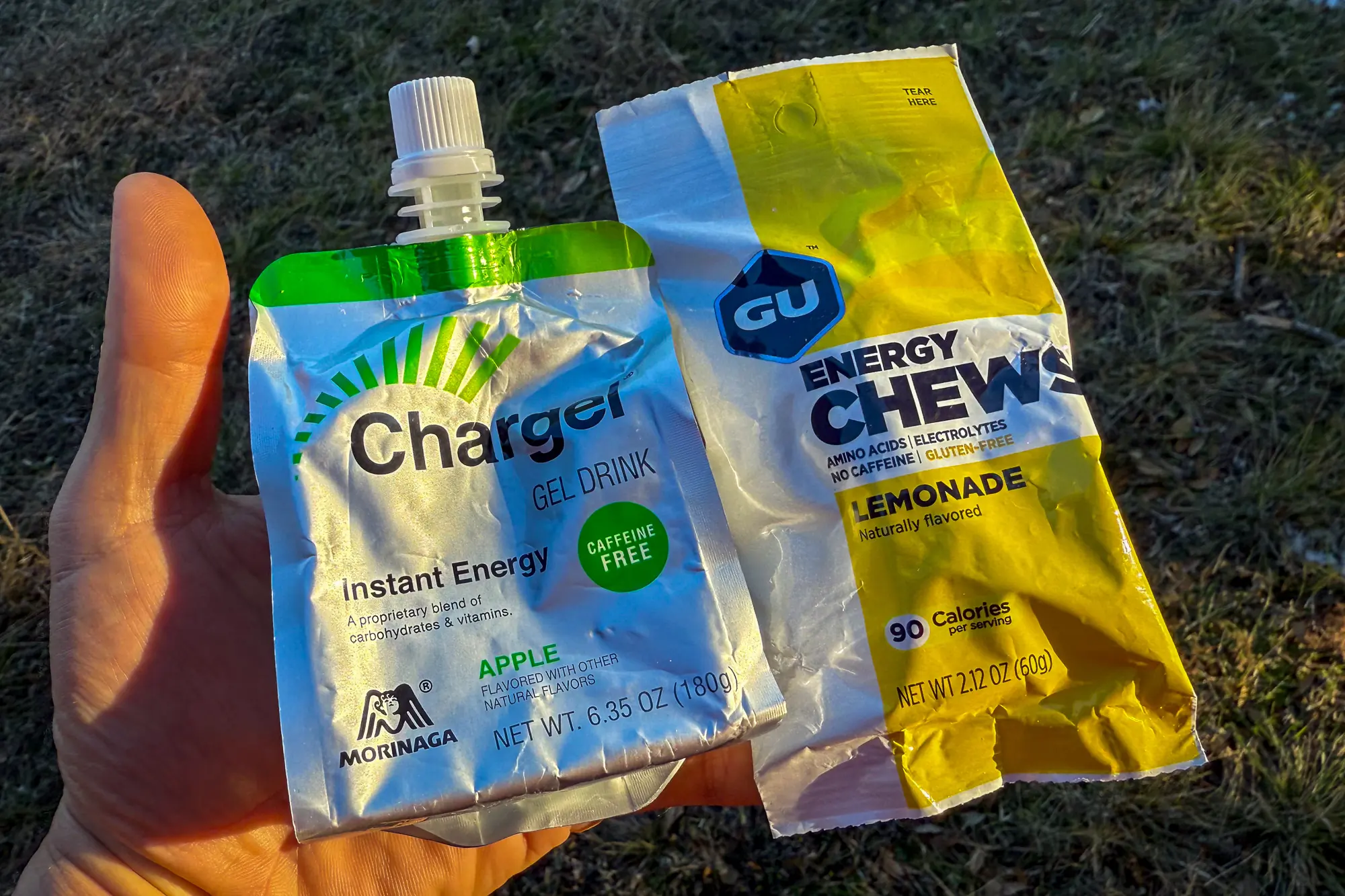



It seems easy, right? Just throw your bike on the trainer and pedal. But the longer you stay on the bike and the more miles you accumulate over the winter, the more little tips and tricks can radically increase your enjoyment and comfort.
The pointers below will lead to better compliance with your program and more mileage — if that is what you are after.
Take Real-World Breaks
The first tip is one that cycling journalist Josh Ross told me recently. Ross rides up to 6 hours (!) on an indoor trainer. I could not understand how he did this without being bored and morphing into a zombie — or, without suffering the inherent discomforts of stationary cycling to the point of being admitted to an ER.
His answer was the “duh” moment of the last decade for me. He simply dismounts his bike periodically, walks about, eats snacks, slugs drinks, and stretches out his back. You know, just like you would do on a real long ride.
Believe or not, this never occurred to me. I just saddled up and wanted to get the work done as quickly as possible.
Schedule Hydration and Feeding
This also seems obvious, but it wasn’t for me. The lack of 3D scenery and the sensation of speed, combined with zero sunshine and constant temperatures, may short-circuit the signals to drink and eat.
I often found myself dehydrated and hypoglycemic after longer or more intense indoor cycling sessions. The simple solution was to set a recurring timer for 20 minutes. Each time the alarm sounded, I drank half a bottle of fluids.
Every other time, in addition to hydration, I ate. This was my routine for racing, but for whatever reason, I didn’t carry it over to indoor training. You will feel much better doing this and it will help keep your heart rate and power output more stable.
Increase Mental Inputs
This may not be necessary for all; the interactive cycling platforms may provide enough distraction and entertainment. But for me, increasing mental inputs makes the time go by faster and lowers my perceived exertion. I surmise it’s because the mental inputs of riding outside, particularly in a group at speed or on gravel, are so much higher than they ever could be cycling indoors.
Not only do I have Zwift (or similar platform) on my computer screen, but I also have a movie or bike race playing in a smaller window. If I’m not chatting with others in the virtual peloton, I’ll listen to the program. Or I may read subtitles if available and listen to a playlist or podcast.
Again, this may drive others batty. But it works for me, and it definitely improves my experience. Chalk it up to ADHD.
Get Off the Saddle, Shake It Out
When riding a bike outdoors, ambient forces that impact the bike will transmit to the touch points where your body contacts it (i.e., handlebars and saddle). This results in numb hands and/or posterior pain. Because an indoor training bike will not encounter (or relay) those signals, riders may not feel the need to get out of the saddle, change position, or stretch.
So, similar to hydration and feeding, I set a timer to remind me to stand every 30 minutes and coast a bit. When I get back on the saddle, I shake out each hand. This practice, combined with the rocker plate, helps eliminate all the touchpoint discomforts.
Fresh Kits
Even with a strong fan, my cycling bibs got sweat-soaked much faster than they would have outdoors. On long rides, they would feel clammy, heavy, and hot. It took me a while to realize that I’m in my own home. I can hop off and switch into a fresh, dry set of bibs.
Also, use bibs or cycling shorts that complement your anatomy. Stationary cycling puts more pressure on our seat, sit bones, and tender bits due to the bike not moving as much. So you might spend more relative time in the saddle compared to riding outside.
When I test bibs, I cycle indoors because it concentrates the dynamics the chamois is designed to mitigate. Because indoor bike training concentrates the factors I need to assess into a much shorter time span, any shortcomings are revealed much earlier.
Switch It Up
Even at my most driven and competitive, I found myself not wanting to do prescribed workouts way more often when forced to ride indoors. This was with the understanding that intervals were way more accurate and focused on an indoor trainer.
For consistent output aerobic rides, there is no distraction of rising and falling intensity. And the duration is the target. Ugh. In addition to my multiple mental inputs, I found it marginally more tolerable if I switched between virtual worlds, continents, geography, and terrain. As soon as I lapped the course, I would switch “worlds.”
I also found marginal improvements by switching between riding with real people, pacing with the group, and chasing a bot. And when a new “world” dropped, I would ride that platform last.
Yes, some of these are Jedi mind tricks. And at most, marginal in effect. But every little bit helps when my ADHD mind doesn’t have speed, traction, or crashes to worry about.
Eat Whatever, Drink Whatever
My final tip simply adds some joy to what can be an arduous task. When training outdoors, I swilled the sports drinks you’d expect a cyclist would. They help stave off dehydration and possible cramping due to electrolyte imbalance.
Calories, meanwhile, came in portable form — gels, chews, and bars. Only on long road rides would I treat myself at gas stations to things I couldn’t carry in my jersey pockets, like huge cinnamon rolls.
When riding indoors, you’ll have a refrigerator nearby and won’t be constrained by what you can carry. So splurge!
When I indoor bike train, I eat and drink what I want, so long as I can tolerate it while I ride. I plan ahead and make nut butter and honey sandwiches (or engulf just peanut butter and house honey). I’ve eaten spaghetti leftovers while pedaling at low wattage.
The point is, if you start feeling the effects of electrolyte imbalance, you don’t have to worry about cramping on the side of a highway a long way from home. Treat yourself.
Final Thoughts on Indoor Bike Training
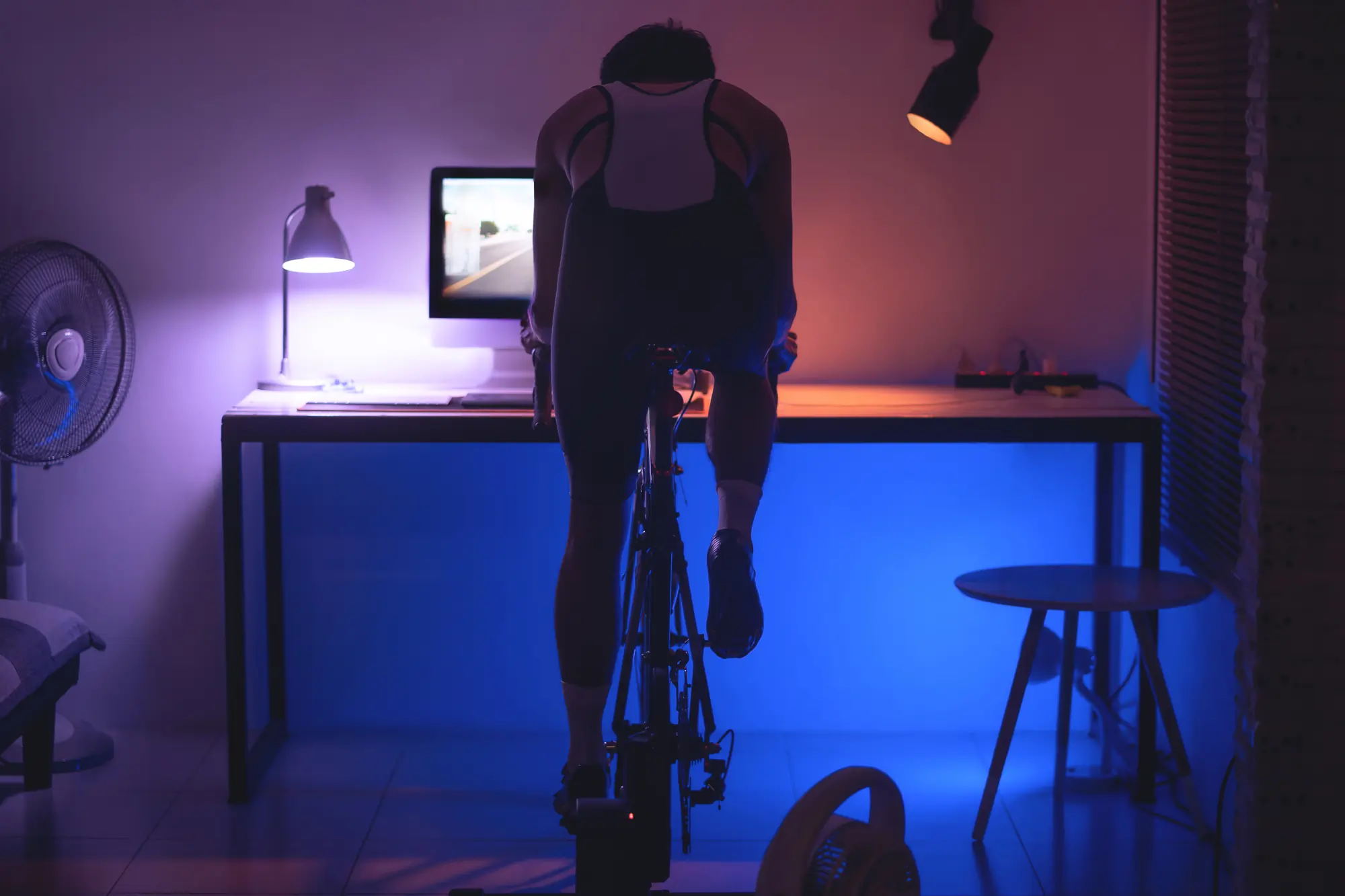



Don’t let all the effort, hours, and miles circle the drain when the cold and darkness come. At the very least, use indoor bike training to maintain a base level of fitness to minimize the suffering you’ll experience when you emerge to ride in the spring.
You can certainly do it in a minimalist style. Most of my current cycling partners ride on a wheel-off trainer and drum fan, with no other specific equipment. Their winter indoor cycling training equipment costs a fraction of what I have in my “ultimate setup.” And we emerge in the spring equally fit.
However, the common denominator for all of us is the use of an interactive cycling platform. We are all on Zwift ($20/month or $200/year), and I rotate between it and MyWhoosh and Rouvy just for variety.
Since I started in the 1980s, indoor bike training has come far. I’ve gone from staring at fish in a tank, trying to ignore a loud wind turbine, to hearing virtual birds while riding both imaginary and simulated landscapes and routes. Sometimes, I draft and battle bots, other times I chat with friends and virtual acquaintances from around the world.
Indoor bike training has become so legitimate that the Zwift Academy landed ProTour contracts for riders based on their performances on a smart trainer. Cyclists can also earn a world championship in eSports aboard an interactive trainer. This world champ earns the same rainbow-banded world championship jersey as real-world winners.
Regardless of your goals, indoor bike training is infinitely more bearable, so compliance tends to be higher, equating to better fitness come summer. So get out there (virtually) and get your sweat on.
